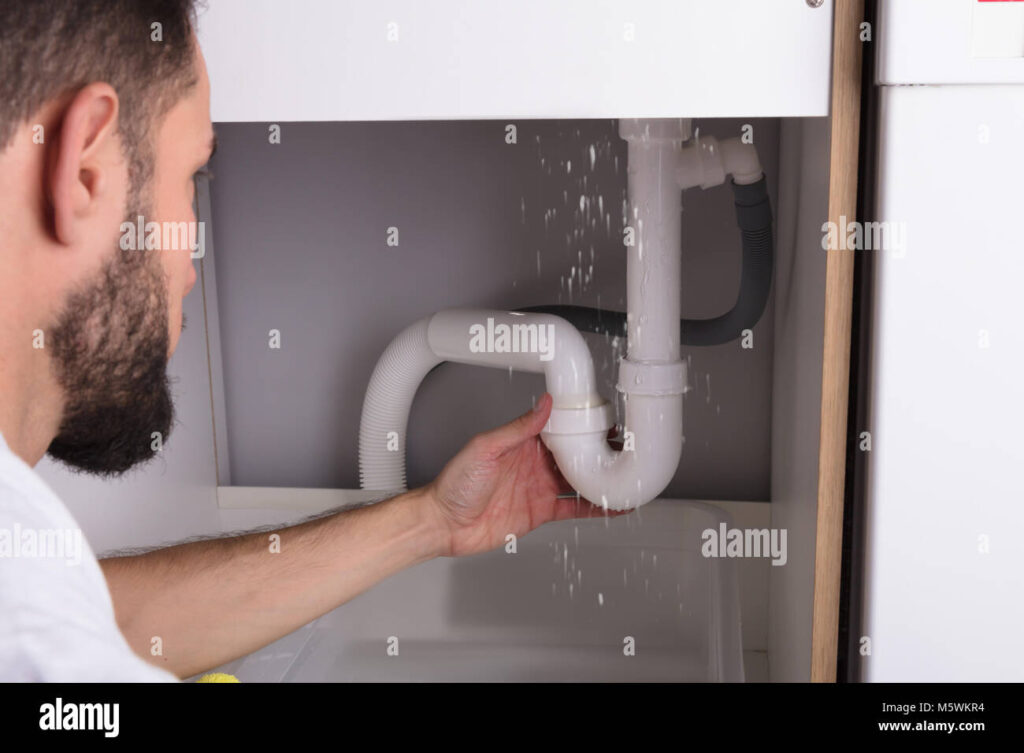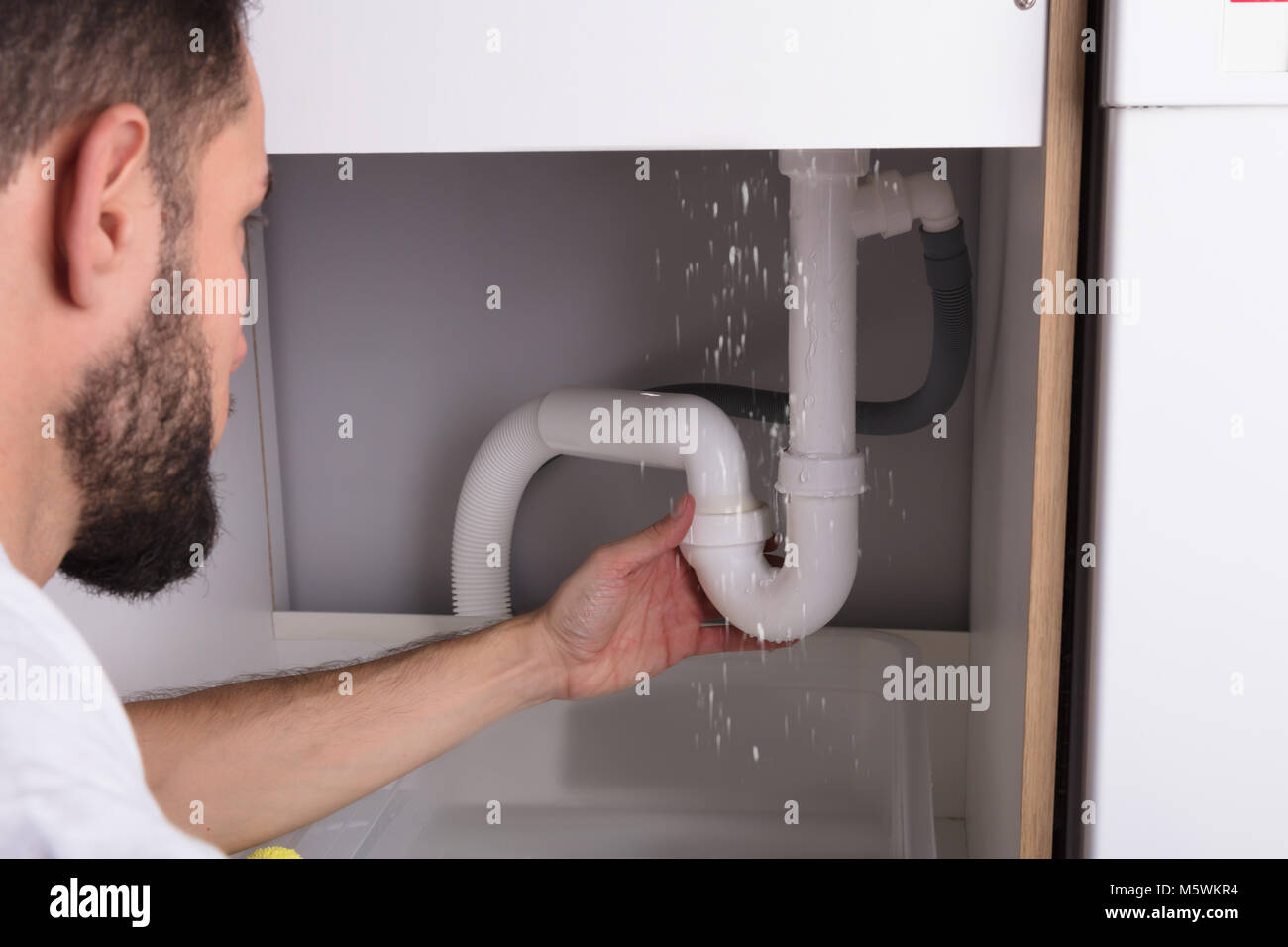
Decoding the Drip: Understanding and Addressing Leakage in the Kitchen Sink
A leaky kitchen sink is more than just an annoyance; it’s a potential source of water waste, property damage, and increased utility bills. Understanding the causes of leakage in the kitchen sink and knowing how to address them is crucial for every homeowner. This article delves into the common culprits behind sink leaks, offering practical advice and solutions to help you tackle this prevalent household problem.
Common Causes of Kitchen Sink Leakage
Pinpointing the source of leakage in the kitchen sink is the first step towards resolving the issue. Several components can contribute to the problem, including:
- Faulty Faucet O-rings: These small rubber rings create a watertight seal around the faucet spout. Over time, they can become brittle, cracked, or worn, leading to leakage in the kitchen sink around the base of the faucet.
- Loose or Corroded Connections: The pipes and fittings beneath the sink are connected using various types of joints. These connections can loosen due to vibrations or temperature changes, or they can corrode due to exposure to water and chemicals. This results in a slow drip or a more significant leakage in the kitchen sink.
- Worn-Out Washers: Washers are flat, rubber or fiber discs used to create a seal between the faucet handle and the valve stem. When these washers wear down, they can cause leakage in the kitchen sink around the handle.
- Damaged Valves: The valves control the flow of water to the faucet. If the valve seats become corroded or the valve stems become damaged, it can lead to persistent leakage in the kitchen sink.
- Clogged Aerator: While not directly causing a major leak, a clogged aerator can cause water to spray or drip erratically, mimicking the appearance of leakage in the kitchen sink.
- Drain Issues: Problems with the drain assembly, including loose connections, damaged pipes, or a faulty P-trap, can result in leakage in the kitchen sink from the drain itself.
- Supply Line Problems: The supply lines that connect the faucet to the water supply can develop leaks due to cracks, loose connections, or corrosion. This can lead to significant leakage in the kitchen sink area.
Identifying the Source of the Leak
Before attempting any repairs, carefully examine the area around your kitchen sink to determine the exact location of the leakage in the kitchen sink. Use a flashlight to inspect hard-to-reach areas. Run the water and observe where the water is coming from. Is it dripping from the faucet spout, pooling under the sink, or running down the pipes? Knowing the source will help you choose the appropriate repair method. Consider placing a dry cloth or paper towel around different areas to help pinpoint the source of the drip.
DIY Solutions for Minor Leaks
For minor leakage in the kitchen sink, you might be able to implement some DIY solutions:
- Tightening Connections: Use a wrench to gently tighten any loose connections on the pipes, fittings, and supply lines. Be careful not to overtighten, as this could damage the components.
- Replacing Washers and O-rings: If you suspect worn-out washers or O-rings are the culprit, purchase replacements at your local hardware store. Turn off the water supply, disassemble the faucet, and replace the worn parts.
- Cleaning the Aerator: Unscrew the aerator from the faucet spout and clean it with a brush and water to remove any debris or mineral buildup.
When to Call a Professional Plumber
While some minor leaks can be fixed with DIY methods, more complex issues require the expertise of a professional plumber. Consider calling a plumber if:
- The leakage in the kitchen sink is significant or persistent.
- You are uncomfortable working with plumbing.
- You suspect a major plumbing problem, such as a burst pipe.
- You have tried DIY solutions without success.
Preventative Measures to Avoid Future Leaks
Taking preventative measures can help you avoid future leakage in the kitchen sink. Here are some tips:
- Regularly Inspect Your Plumbing: Check under your sink for any signs of leaks, corrosion, or damage.
- Avoid Over-Tightening Connections: When tightening connections, be careful not to overtighten, as this can damage the components.
- Use Quality Plumbing Fixtures: Investing in quality plumbing fixtures can help reduce the risk of leaks and other problems.
- Be Mindful of What Goes Down the Drain: Avoid pouring grease or other debris down the drain, as this can clog the pipes and put stress on the plumbing system.
- Insulate Pipes in Cold Climates: Insulating pipes can help prevent them from freezing and bursting during cold weather.
The Environmental and Financial Impact of Leaks
Ignoring even a small leakage in the kitchen sink can have significant environmental and financial consequences. Water waste contributes to water scarcity, and increased water bills can strain your budget. By promptly addressing leaks, you can conserve water, save money, and protect the environment. A slow drip can waste gallons of water over time, adding up to a significant amount on your water bill. Furthermore, prolonged exposure to water can cause mold growth and structural damage to your home.
Advanced Leak Detection Techniques
Sometimes, the source of leakage in the kitchen sink is not immediately apparent. In such cases, advanced leak detection techniques may be necessary. These techniques include:
- Pressure Testing: This involves pressurizing the plumbing system to identify any leaks.
- Acoustic Leak Detection: This uses specialized equipment to listen for the sound of leaks in the pipes.
- Infrared Thermography: This uses infrared cameras to detect temperature differences that can indicate the presence of leaks.
These advanced techniques are typically used by professional plumbers to locate hidden leaks and prevent further damage.
Choosing the Right Faucet for Your Kitchen
If your faucet is old or damaged, it may be time to replace it. When choosing a new faucet, consider the following factors:
- Style: Choose a faucet that complements the style of your kitchen.
- Functionality: Consider the features you need, such as a pull-down sprayer or a touchless operation.
- Durability: Choose a faucet made from high-quality materials that will last for years.
- Water Efficiency: Look for a faucet with a low-flow aerator to conserve water.
Installing a new faucet can be a DIY project, but it’s important to follow the instructions carefully to avoid any leaks.
Understanding Plumbing Codes and Regulations
When dealing with plumbing issues, it’s important to be aware of local plumbing codes and regulations. These codes are designed to ensure the safety and efficiency of plumbing systems. Some common plumbing codes include:
- International Plumbing Code (IPC): This is a widely used model code for plumbing systems.
- Uniform Plumbing Code (UPC): This is another widely used model code for plumbing systems.
Consult your local building department to determine which plumbing codes are in effect in your area. Following these codes can help prevent future plumbing problems and ensure the safety of your home.
Conclusion
Leakage in the kitchen sink is a common problem that can be caused by a variety of factors. By understanding the causes of leaks, knowing how to identify the source, and implementing appropriate solutions, you can prevent water waste, save money, and protect your home from damage. Whether you choose to tackle minor repairs yourself or call a professional plumber, addressing leaks promptly is essential for maintaining a healthy and efficient plumbing system. Remember that regular inspection and preventative maintenance are key to avoiding future problems. Don’t let a small drip turn into a major headache – take action today to address any leakage in the kitchen sink and ensure the longevity of your plumbing system. Ignoring a leakage in the kitchen sink can lead to bigger problems down the road. Take the time to address it now and save yourself time, money, and stress in the long run. A small leakage in the kitchen sink can also be a sign of a larger problem, so it’s important to investigate and address it as soon as possible.
[See also: How to Replace a Kitchen Faucet]
[See also: Understanding Common Plumbing Problems]
[See also: Tips for Saving Water in Your Home]

